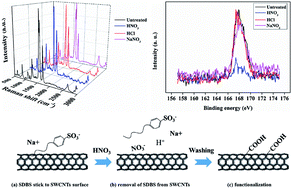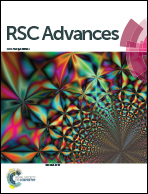Mechanism of surface treatments on carbon nanotube transparent conductive films by three different reagents
Abstract
Transparent conductive films (TCFs) were fabricated via a spray-coating method with a solution prepared by dispersing single-walled carbon nanotubes (SWCNTs) in deionized water with sodium dodecylbenzene sulfonate (SDBS) as surfactant. We explored the mechanism of HNO3 treatment by treating TCFs with different reagents. After being treated with different concentrations of reagents by HNO3, HCl, and NaNO3 to lower the sheet resistance of TCFs, the properties of TCFs were further characterized by a UV-VIS spectrophotometer, a four-point probe method, atom force microscopy, X-ray photoelectron spectroscopy, and Raman spectroscopy. In this study, we conclude that the HNO3 treatment results in a decrease in the sheet resistance of the TCFs due to the combined effect of acidity and oxidizability. The strong interaction of the strong acidity and strong oxidizing property of HNO3 causes the SDBS to be removed. To further improve the film conductivity of the TCFs, the experimental conditions of the HNO3 treatment were optimized.



 Please wait while we load your content...
Please wait while we load your content...